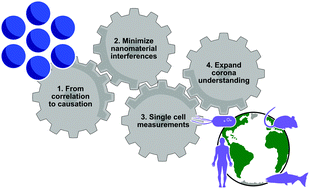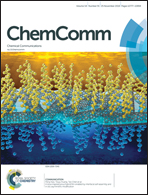Linking nanomaterial properties to biological outcomes: analytical chemistry challenges in nanotoxicology for the next decade
Abstract
The field of nanotoxicology has evolved rapidly in the past two decades. Starting from simple nanomaterials and established toxicity assays, researchers’ foci have shifted towards understanding the mechanisms underlying nanotoxicity. Furthermore, an important goal has been linking nanomaterial properties to biological responses to build predictive models for safer nanomaterial design. Here, we provide our perspectives, as analytical chemists, on the analytical challenges in nanotoxicology as the field is entering its third decade. We have identified these challenges to include understanding causal relationships in mechanistic studies of nanotoxicity, overcoming nanomaterial interferences for accurate nanotoxicity assays, connecting nanoparticle interactions to cellular responses at the single-cell level, and making chemical measurements at the nano–bio interface in real-time and in situ.



 Please wait while we load your content...
Please wait while we load your content...
